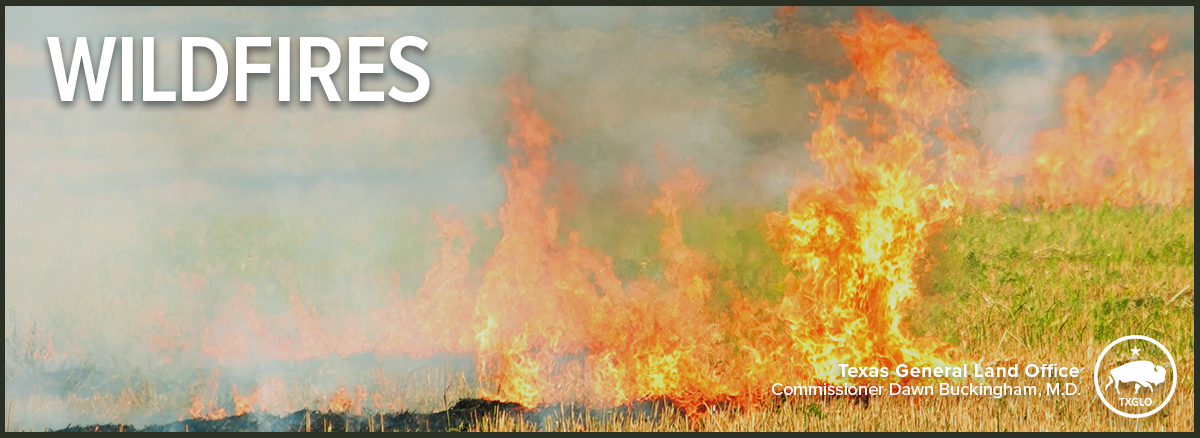Wildfire Preparedness
Wildfires are unplanned fires that burn in natural areas like forests, grasslands or prairies. These dangerous fires spread quickly and can devastate not only wildfire and natural areas, but also communities. Know your risk, protect your home and plan your supplies and evacuation route. Texans can also follow the GLO for updates on social media (Twitter, Instagram, Medium, Facebook, and YouTube).
Before a Wildfire
- View the Texas A&M Forest Service Incident Viewer.
- Sign up for your community’s emergency warning system.
- If available, store KN95 masks to protect from smoke inhalation.
- Keep your cell phone charged when wildfires could be in your area.
- Remember to secure copies of important personal documents. Filing for government assistance requires documentation. Be sure to keep documents in a secure location and take them with you if you need to evacuate.
- You may have to evacuate quickly due to a wildfire. Learn your evacuation routes, practice with household, and identify where you will go.
- Follow the instructions from local authorities. They will provide the latest recommendations based on the threat to your community and appropriate safety measures.
Preparing for wildfires on your ranch: Wildfire on a ranch can be costly and dangerous. Help first responders by preparing for future wildfires.
- Maintain a 30-foot barrier clear of burnable materials around fields and structures.
- Inform your fire department about access roads, water sources, fence lines and preferred wildfire suppression tactics.
- Establish contingency plans for feeding livestock and create a plan to relocate livestock if fire is imminent and time permits.
- View the Wildfires and Your Livestock checklist here.
Protect Your Property
- Use fire-resistant materials to build, renovate or make repairs.
- Find an outdoor water source with a hose that can reach any area of your property.
- Create a fire-resistant zone that is free of leaves, debris, or flammable materials for at least 30 feet from your home.
- Designate a room that can be closed off from outside air. Close all doors and windows. Set up a portable air cleaner to keep indoor pollution levels low when smoky conditions exist.
Evacuation
- Evacuate immediately if authorities tell you to do so.
- Check with local authorities for the latest information about public shelters or check open locations on the FEMA app. You can also download the free Red Cross Emergency app for a list of open Red Cross shelters in your area.
- Evacuation Tip: Roll up car windows and close air vents because smoke from a fire can irritate your eyes and respiratory system.
- Adults and children with conditions such as asthma might need to evacuate long before the fire reaches your community as smoke can extend far beyond the boundaries of a wildfire.
- Remember the Five Ps of Evacuation: People, Prescriptions, Papers, Personal Needs, and Priceless Items.
- Be prepared to evacuate if a wildfire occurs by knowing your family’s evacuation plan. Plan several escape routes away from your home by car and by foot.
Resources
- Texas Animal Health Commission
- Texas Department of Emergency Management Disaster Portal
- Wildfire Safety Social Media Toolkit
- Wildfire Outreach Materials (USFA)
- Texas A&M Forest Service Wildfire Resources
- RSG! Program
- Wildfire Information Sheet
- Protective Actions Research for Wildfire
- Create a Clean Room (EPA)
- Wildfires and Indoor Air Quality (EPA)

